 Warm, sunny weather expected in Dallas-Fort Worth this weekDallas-Fort Worth residents can expect a dry, warm and clear week, with little to no surprises. Monique Sellers, National Weather Service meteorologist, said the upcoming week will almost have almost identical weather daily, with rain chances by the weekend. “It does look like we could start seeing a pattern change by the weekend, though, so that’s something to keep an eye on,” Sellers said. “There’s a chance that we’ll get a cold front that will come through.”
Warm, sunny weather expected in Dallas-Fort Worth this weekDallas-Fort Worth residents can expect a dry, warm and clear week, with little to no surprises. Monique Sellers, National Weather Service meteorologist, said the upcoming week will almost have almost identical weather daily, with rain chances by the weekend. “It does look like we could start seeing a pattern change by the weekend, though, so that’s something to keep an eye on,” Sellers said. “There’s a chance that we’ll get a cold front that will come through.” Howl-O-Ween Doggy Costume Contest brings pup getups to Downtown Arlington Doggie DepotThe sound of barking dogs dressed to the nines brightened the Downtown Arlington Doggie Depot on Saturday at the first-ever Howl-O-Ween Doggie Costume Contest. The heat and sun did not stop the competition, and the 20 contestants walked the red carpet, showing off fun, glamorous costumes to popular ’80s songs. Fan favorites included dogs dressed as a chicken, a hot dog and Ahsoka Tano from Star Wars. Marissa Soto, Arlington resident and event coordinator, 39, said she wanted to bring attention to the doggie depot and create a fun community downtown. “At the end of all this, it was just watching dogs in costumes, I was like, ‘I’m going to end up having a great time,’” Soto said. These canines went paw-to-paw for four categories: funniest costume, most creative/DIY costume, best owner/dog duo and best costume overall. Grapevine, Texas, resident Megan Aeschbach, 35, won DIY and most creative with her goldendoodle Tyger, dressed in a handsewn Dallas Cowboys cheerleader uniform. Aeschbach said sewing the jewels onto Tyger's costume took the longest and wasn’t finished until the night before. She said she wasn’t sure if they’d compete; she just wanted to go out to the event. “It’s great to get people out, spend time outside, see other dogs,” she said. “I love dog-friendly events that I can take her to.” The judges had raving reviews of the competition. Doreen Bruner, Downtown Arlington Management Corp. chair and one of the judges, 70, said she hopes the event becomes annual. “The chicken one just cracked me up,” Bruner said. Arlington resident Citlali Pacheco, 29, was one of the judges and said it was hard to choose who had the best costumes. “They were all so cute,” Pacheco said. “They’re all winners to me.” Grand Prairie, Texas, resident Kyle Collett, 35, dressed up as a TIE fighter pilot and won the best owner and dog costume with his dog Zoey, who dressed up as his captive Ahsoka Tano. Collett said Zoey would be in for a doggy pie even if she didn’t win. Grand Prairie resident Alejandrina Rodriguez, 42, and her dog Tutsy won best costume overall, dressed as Snow White and the Evil Queen. When asked how she felt after winning, Tutsy made no comment. No barks, no panting, just a wagging tail. @tay._.sansom @atclements03 news-editor.shorthorn@uta.edu
Howl-O-Ween Doggy Costume Contest brings pup getups to Downtown Arlington Doggie DepotThe sound of barking dogs dressed to the nines brightened the Downtown Arlington Doggie Depot on Saturday at the first-ever Howl-O-Ween Doggie Costume Contest. The heat and sun did not stop the competition, and the 20 contestants walked the red carpet, showing off fun, glamorous costumes to popular ’80s songs. Fan favorites included dogs dressed as a chicken, a hot dog and Ahsoka Tano from Star Wars. Marissa Soto, Arlington resident and event coordinator, 39, said she wanted to bring attention to the doggie depot and create a fun community downtown. “At the end of all this, it was just watching dogs in costumes, I was like, ‘I’m going to end up having a great time,’” Soto said. These canines went paw-to-paw for four categories: funniest costume, most creative/DIY costume, best owner/dog duo and best costume overall. Grapevine, Texas, resident Megan Aeschbach, 35, won DIY and most creative with her goldendoodle Tyger, dressed in a handsewn Dallas Cowboys cheerleader uniform. Aeschbach said sewing the jewels onto Tyger's costume took the longest and wasn’t finished until the night before. She said she wasn’t sure if they’d compete; she just wanted to go out to the event. “It’s great to get people out, spend time outside, see other dogs,” she said. “I love dog-friendly events that I can take her to.” The judges had raving reviews of the competition. Doreen Bruner, Downtown Arlington Management Corp. chair and one of the judges, 70, said she hopes the event becomes annual. “The chicken one just cracked me up,” Bruner said. Arlington resident Citlali Pacheco, 29, was one of the judges and said it was hard to choose who had the best costumes. “They were all so cute,” Pacheco said. “They’re all winners to me.” Grand Prairie, Texas, resident Kyle Collett, 35, dressed up as a TIE fighter pilot and won the best owner and dog costume with his dog Zoey, who dressed up as his captive Ahsoka Tano. Collett said Zoey would be in for a doggy pie even if she didn’t win. Grand Prairie resident Alejandrina Rodriguez, 42, and her dog Tutsy won best costume overall, dressed as Snow White and the Evil Queen. When asked how she felt after winning, Tutsy made no comment. No barks, no panting, just a wagging tail. @tay._.sansom @atclements03 news-editor.shorthorn@uta.edu
- UTA to honor Les Riding-In during Indigenous Peoples' Day eventThe UTA Native American Student Association will dedicate this year’s Indigenous Peoples’ Day to honor the life and legacy of Les Riding-In, Native American Student Association primary adviser, whose leadership and teachings were instrumental in bringing the holiday’s recognition to campus. From noon to 2:30 p.m. Monday, students and communities around campus are invited to the Central Library’s sixth floor Parlor, followed by a gathering in the Land Acknowledgement Courtyard. Stephen Silva-Brave, president of the Native American Student Association, said that they reenvisioned this day to honor, remember and continue Riding-In’s contributions to the UTA community. The program will feature blessings, an honoring song and reflections from colleagues, students and community members who worked with Riding-In on initiatives such as the annual Benefit Powwow, the university’s land acknowledgement and the Land Acknowledgement Courtyard. A light lunch will be provided by the Department of History and Geology. The memorial will also recognize the continuing presence and resilience of Native peoples. “It’s about recognition — about the fact that this was all Indigenous peoples’ land, and that we are still here,” said Silva-Brave. “It’s about reminding people of the true story of who were the first people here.” Visitor parking is available in the Maverick Parking Garage. Attendees can get a free event permit by visiting the MavPark website, selecting “purchase event permit,” choosing “student organization event,” choosing the Indigenous Peoples’ Day event and entering the voucher code IPD2025. The event is open to all members of the campus and local community. @samip.parajuli.54 news-editor.shorthorn@uta.edu
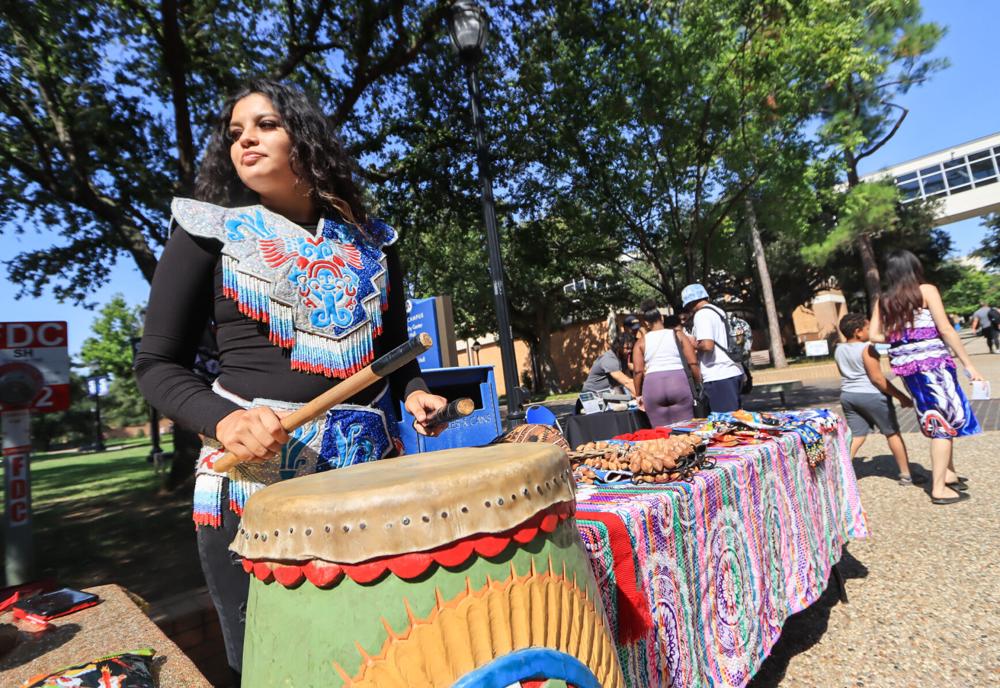
- Soccer on a screen: Students compete in FIFA tournamentWith controllers clicking and laughter echoing throughout the Central Library Basement, students faced off in the UTA men’s soccer club’s first-ever FIFA tournament Friday. FIFA, or EA Sports FC, is a widely popular soccer simulation video game dating back to the ‘90s. In the game, players have the option to face off locally in a one-on-one match where each person controls an entire team. Friday’s tournament saw about 30 participants for a night of friendly competition and banter amongst students and club members, while enjoying pizza and playing video games. Eduardo Hernandez, information systems senior and the club’s committee chair, said the tournament was meant to give students a chance to relax and have fun after a busy week of exams. The event also had a goal of raising funds for the soccer club, said Alen Pjetrovic. As the tournament started, controllers weren't the only thing buzzing; the energy in the room built after each match. Players leaned forward in their seats, eyes locked on the screen, while small groups of people gathered around. Hernandez said that one of the biggest challenges in organizing the tournament was getting people involved and spreading the word. Data science junior Sulav Dhungan said he signed up for the tournament because he loves playing FIFA and wanted to join his friends, who were already participating. Match after match with blowout losses, nailbiters decided in the final seconds and even a near 4-7 comeback, the tournament had excitement and competition throughout. Participants and spectators cheered, groaned and joked with friends, keeping the energy in the room high from the start. As the tournament progressed and participants were knocked out, students began playing friendly rematches around the room. Bickering and bursts of laughter filled the basement as more eliminated players looked to get revenge. After several intense matches, the tournament began narrowing down its finalists. A dominant performance concluded the last bracket where business junior Alejo Gonzalez took home the championship and the cash prize. Gonzalez said he was nervous in the last match of the tournament, as he was pitted against his friend he plays with frequently, noting it was the toughest match of the night for him. “I had high hopes because, honestly, I do play quite a bit, so I was hoping I would win, but yeah feels good,” Gonzalez said. @tracysansomjr sports-editor.shorthorn@uta.edu
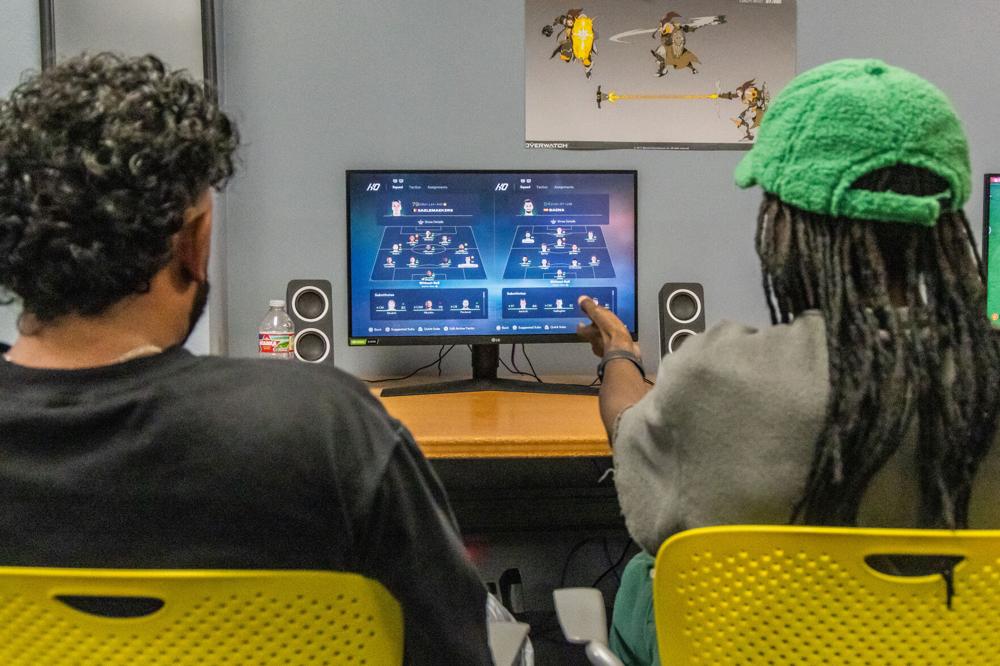
- Former US Ambassador Michael McFaul shares experiences during Maverick Speakers SeriesMichael McFaul, former United States ambassador, engaged the audience Tuesday night in Texas Hall during the fall Maverick Speakers Series. McFaul was a special assistant to the president and senior director of Russia and Eurasia affairs at the National Security Council from 2009 to 2012 during the Obama administration and became a U.S. ambassador to the Russian Federation from 2012 to 2014. President Jennifer Cowley opened the Maverick Speakers Series with an introduction discussing UTA’s 130th anniversary and achievements from this year. She then welcomed McFaul and moderator Brian Whitmore, assistant professor of practice at UTA and a nonresident senior fellow at the Atlantic Council's Eurasia Center, to the stage. During the night, Whitmore and McFaul covered many topics, including McFaul's upcoming book, “Autocrats vs. Democrats,” which discusses the state of democracy with an eye on foreign policy. After working at the White House for two years, McFaul had promised his family that they would be going back home to California, but the government had other ideas. He talked with his family, making sure his son was okay with moving to Russia, and then they were off. “We were excited to go and serve our country, and even before I got to the office they ran this hit piece on me saying that I was there to foment revolution,” McFaul said. Tensions did not lower from there; he and his family were often followed with cameras. “It was not pleasant,” McFaul said. “They knew, and they were right, that following my kids to school would get under my skin.” He said that with the protocols in place, he had bodyguards, but his kids did not. With cameras and death threats coming his way, McFaul made mistakes. “I said some things that I regret," he said. “I called Russia a wild country one time when these key TV cameras are following me.” However, it wasn’t all bad. McFaul did have an interest in the country. When he was younger, McFaul visited Russia multiple times and saw the country when it was still a part of the Soviet Union. Whitmore asked McFaul if people had been wrong to hope that Russia would have been a completely democratic nation after the fall of the Soviet Union. McFaul said that the question was difficult, and that whole books could be written on the exact subject. He said being in Russia in the early 1990s was a euphoric period for him because he was fighting for democracy alongside Russians. “I was in these demonstrations with hundreds of thousands of people, folks, I want you to know it wasn’t just 50,” McFaul said. “We were protesting against tyranny, for democracy.” Even with all of these new political ideas in Russia at the time, McFaul said the deep structures of the Soviet Union never left. “They didn't all just disappear when the Soviet Union collapsed. Property rights, all connected, the red directors, that didn't just go away,” he said. “And most importantly, the intelligence agencies, the KGB was renamed the FSB, but they didn't go away.” McFaul said all of those structures had a part to play in democracy not totally sticking. His upcoming book goes through the history of U.S. and Russian competition and cooperation. He said the book also dives into the current moment that the two countries are in and what the future of their relationship could be. Throughout the whole Speaker Series, McFaul kept going back to talk about the fight between the autocrats and democrats, how it has cooled down and heated up at various points in history. Even though the Cold War is over, McFaul said the battle of these ideologies will continue on. “Tragically, this fight is going to go on for decades folks, this is a fight of the 21st century,” he said. Arlington resident Mike Ratliff, 73, said he attended the speakers series after seeing McFaul on MSNBC several times and wanted to take the opportunity to see him in person. “I liked the personal anecdotes that he gave so that it wasn’t all just theory,” Ratliff said. Arlington resident Gregory Schadt, 65, said he also liked hearing about McFaul’s personal experiences, things that might not have made it into his books. Schadt said events like the Maverick Speakers Series are important because they allow community members to get exposure with people who have influenced world events. @wall035203 news-editor.shorthorn@uta.edu

- Levitt Pavilion to host fourth annual Asian Heritage CelebrationFrom 3 to 6 p.m. Saturday, Levitt Pavilion is holding its fourth annual Asian Heritage Celebration. The celebration will include performances and vendors selling goods from several Asian countries. Angela Peña, Levitt Pavilion communications and program development director, said the event is not like a regular festival; instead, it’s an educational festival. “There’s over 50 countries that make up the Asian population, and we have about 35 of them represented at this event,” Peña said. She said performances will range from K-pop dances by a dance troupe to Philippine dancers. Levitt Pavilion began hosting cultural events when the city formed advisory councils to hear voices from diverse communities. Peña said the community has been receptive to the events, and Levitt Pavilion has continued them, as it falls into the nonprofit’s mission to represent the community. “These festivals have meant connecting with the community more,” she said. “Music brings joy to people, and then when you layer it with festival, food, shopping, retail, the community really shows up. And so for us, it truly has meant just being more a part of the community.” @wall035203 news-editor.shorthorn@uta.edu
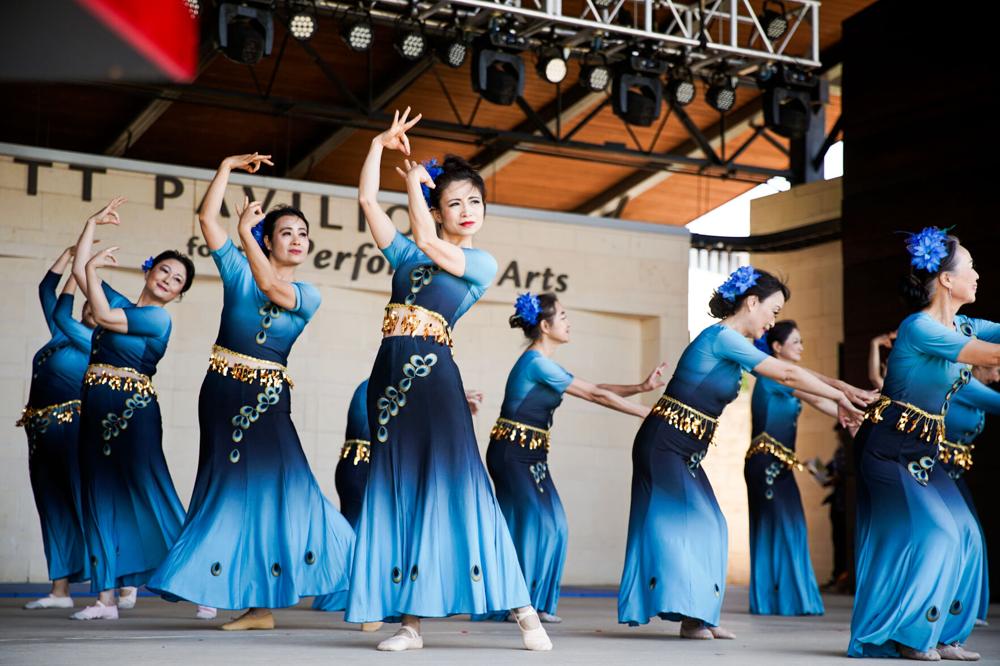
- Criminal mischief, burglary of habitation and graffiti reported in this week’s crime logThis is a crime wrap-up of Oct. 1-5. Criminal mischief On Oct. 1, an officer investigated graffiti that was found on a wall, UTA Police Capt. Mike McCord said in an email. Criminal mischief of under $100 is a class C misdemeanor, punishable by a fine not to exceed $500. Criminal trespass — unlawful carrying of a weapon On Oct. 2, officers investigated reports of two suspicious persons, and both were arrested for criminal trespass, McCord said. One of the individuals was charged with unlawful carrying of a weapon. Both were transported to Arlington Police Department jail. If the offender has not been previously convicted of trespassing on higher education property, the offense is a class B misdemeanor, punishable by a fine not to exceed $2,000, confinement in jail of up to 180 days or both. If the offender has been previously convicted, the offense is a class A misdemeanor, punishable by a fine not exceeding $4,000, up to one year in jail or both. Unlawful carrying of a weapon is class A misdemeanor, punishable by a fine not exceeding $4,000, up to one year in jail or both. Graffiti On Oct. 4, an officer investigated graffiti on a generator, McCord said. Graffiti with under $100 in pecuniary loss is a class C misdemeanor, punishable by a fine not to exceed $500. Assault causes bodily injury to a family member On Oct. 5, a student reported being assaulted by her sister during an altercation, McCord said. The sister was arrested and transported to Arlington Police Department jail. Assault causing bodily injury to a family member is a third-degree felony, punishable by jail time between two and 10 years. Perpetrators may also receive a fine not exceeding $10,000. Burglary of habitation On Oct. 5, a student reported the burglary of her apartment, McCord said. Burglary of habitation is a second-degree felony, punishable by imprisonment in the Texas Department of Criminal Justice for between two and 20 years. Perpetrators may also receive a fine not to exceed $10,000. The case is still active. @wall035203 news-editor.shorthorn@uta.edu
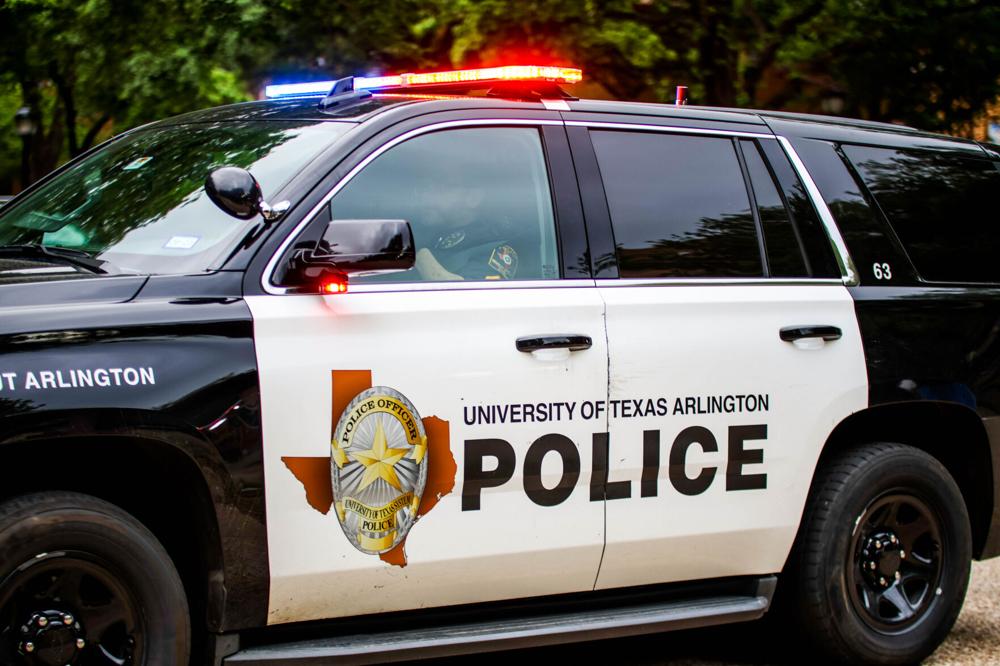
- October is Breast Cancer Awareness Month. Here’s what to know about spotting breast cancerOctober is Breast Cancer Awareness Month. While some students might have a basic understanding of the disease, it is important to know the symptoms that can target anyone, even people as young as college students. According to the Centers for Disease Control and Prevention, breast cancer is the second most common cancer and second leading cause of cancer death among women in the United States. The most common sign of breast cancer is new lumps or masses, according to the American Cancer Society. However, there are more symptoms to be wary of, said Christine Roberts, clinical assistant professor of nursing. Any changes going on with the breasts, such as pain, dimpling, indentations, changes in how your skin looks or feeling anything abnormal, can be signs of cancer as well, she said. As a breast cancer survivor herself, Roberts said she had no symptoms, and her breast cancer was caught on a routine mammogram. “Cancer doesn't just appear; it can take years to grow,” she said. “My physician told me mine was caught early, but it was probably growing for two to three years, and never knew about it.” Mammograms are crucial, said Alice Mitchell, administrative assistant in the College of Nursing and Health Innovation dean’s office. She encourages individuals to conduct regular self-examinations for signs of cancer. “Lots are found when you have to do your annual, but there's quite a few that are found by self-examination,” Mitchell said. “So it's really important.” Some individuals are unmotivated to get a screening due to common misconceptions. “As human beings, we always think, ‘This won't happen to me,’ even that ‘I'm young, this won't happen to me,’ or even, ‘I'm a man, this won't happen to me,’ but it can happen to males and females, and it can happen at any age,” Roberts said. In addition to screening, being supportive of individuals with breast cancer can go a long way and take many forms. Supporting causes that address breast cancer, such as annual runs or walks, and lending an ear are good ways to provide support, Mitchell said. Education from websites can also provide information and resources. Roberts said the Susan G. Komen website provided her with a lot of helpful information. “It helped explain so much of the diagnostics and the testing and what these tests mean in a language that, especially if you're not medically inclined, you can actually understand,” Roberts said. “Knowledge can be scary, but it’s also powerful, and it starts with that first step. We can hope we don’t have it, but we can also know we don’t have it.” @CourtneyFr8226 news-editor.shorthorn@uta.edu

- Founder’s Day Fest to bring history, community, entertainment to Brazos ParkOn Friday, UTA will celebrate 130 years of the university with Founder’s Day Fest, hosted by UTA Ambassadors, from 5 to 8 p.m. at Brazos Park with food, entertainment and prizes. The event will feature live performances, including Mariachi Los Jinetes, a student-led mariachi band, and other student organizations. There will also be giveaways for attendees. Students are encouraged to dress up as their favorite decade or century. Music from the past and present will be playing for students to enjoy. Jodie Orogun, marketing chair for UTA Ambassadors, said Founder’s Day Fest is for students to fully understand what UTA stands for and witness that for themselves at the event. “It's really to bring us together as a school, as the diverse community that we are,” she said. “Just to celebrate, not only the school but one another, because we are part of UTA’s history now.” @hud4qureshi news-editor.shorthorn@uta.edu
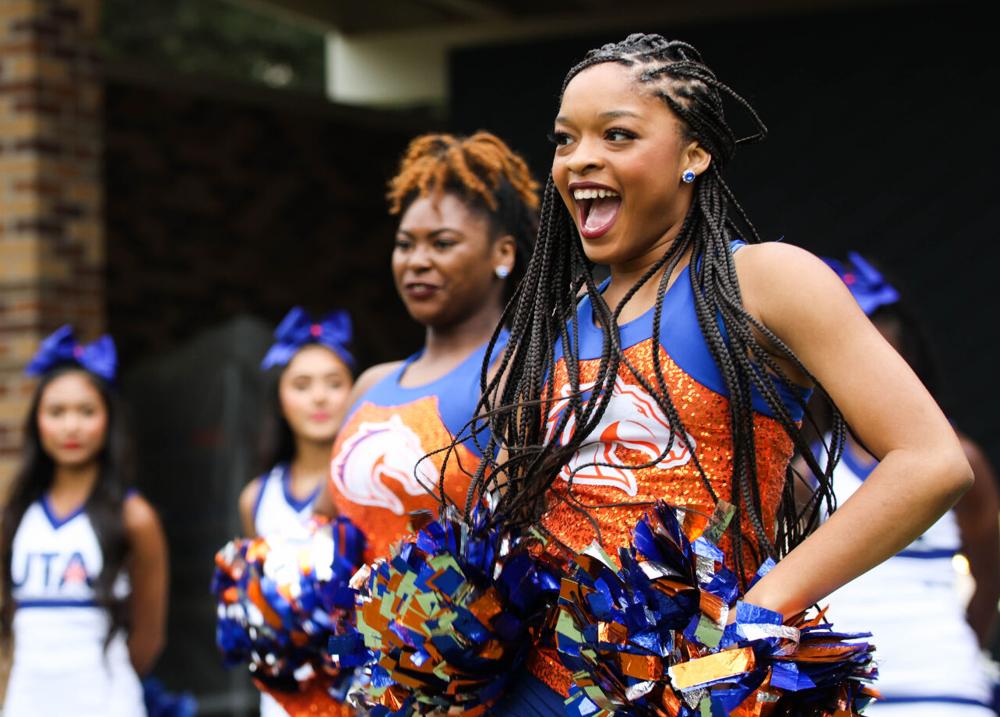
- UTA marching band brings 'The Hero’s Journey' to the fieldThe hero stood at the 50-yard line, flute slightly trembling in her hand. She stepped forward — alone. She took a few deep breaths to center herself and looked to the drum major, her bandmates and the color guard scattered across the field. Then she played the first note of her solo. “This is the reflection period,” said Kate Ullrich, music education junior and flute soloist. “We’re coming to a moment of clarity, and just coming to my senses as hero and being like, ‘This is what I need to do, I have the strength to do it.’” Ullrich and her fellow UTA bandmates have been hard at work preparing for their upcoming program, “The Hero’s Journey,” a blend of music, movement and formation which they perform during exhibitions at high school marching band competitions. Megan Moore, music education junior and drum major, said she has witnessed the show’s evolution from the beginning at band camp, when people didn’t really know each other, to now rehearsing three, sometimes four, times a week. “It’s just really cool to see everyone’s dedication and how much time people spend here with each other trying to get better,” Moore said. Estrella Ruiz, political science sophomore and mellophone player, said being in the band is physically and mentally demanding, but it’s achievable. “There’s so many people that are helping you and supporting you throughout the whole process that it makes it really enjoyable,” Ruiz said. That encouragement doesn’t come without effort. It's forged in the heat of the Texas sun during the hustle and repetition of weekly rehearsals. At a Thursday evening practice, the work was constant. Water breaks were brief. Band members hustled across the field, instruments and flags in hand. A voice over the speaker called out instructions as the band rehearsed the final part of its show. At one point, members assigned an odd-numbered drill chart sang through the music while those with an even-numbered drill chart counted their steps to the next formation. Sometimes it’s hard to stay focused during practice with everything happening around her, Ruiz said. But she reminds herself that slipping out of position could endanger her and those around her. Her passion also helps her stay present in practice, she said. “I enjoy what I do,” Ruiz said. “If I have a passion for something, why wouldn’t I pay attention to what I’m doing?” For others, the band is more personal — a place to feel seen and valued. Elizabeth Polk, studio art sophomore and auxiliary percussionist, a position otherwise known as rack, said that college band feels different from high school. Back then, she was one of many in a large percussion section. Now, she feels her presence truly matters, as the only UTA band member who plays rack. “There was this one time I ran into a professor and he’s like, ‘Well, I mean if you keep coming back, we’ll just write rack parts for you,’ and I’m like, ‘Okay, that sounds cool, I’m down,’” she said. Beyond rehearsals and relationships, it all comes back to the story the band is telling. The band brings the hero’s journey to life — not just through drill formation and visuals, but through music that carries the audience through each phase. Chris Evans, associate director of bands, said the show features selections from “Super Mario Bros. Opus,” from “The Super Mario Bros. Movie,” “Raisuli Attacks” by Jerry Goldsmith and “Fly to Paradise” by Eric Whitacre. The marching show starts upbeat, Evans said, before turning dark like an “inevitable clash with the bad guy.” From there, the music shifts toward inner resolve and ends in a final battle. Through movement and equipment changes, the color guard adds visual layers to the show. Rebekah Watson, operation and supply chain management sophomore and colorguard member, said the opener is lighthearted and ends with a Mario jump. For the ballad, the team uses swing flags, which are “nice and pretty,” she said. The show ends with the conflict, Watson said, and the choreography reflects that: the color guard sweeps across the field in sharp, urgent patterns, tossing their flags in 45-degree angles that cut through the air at jagged angles, like a visual clash unfolding. After hours on the field Thursday evening, with the sunlight slowly fading away, the energy held. Members checked angles and made corrections between each rep as the metronome clicked steadily. As the final note of her solo rang out, Ullrich stood steady, a brass quintet behind her – no longer playing the hero but becoming her. “I have been empowered as a hero,” Ullrich said. “I’ve been a changed person – and now I’m going to get out there.” @tay._.sansom news-editor.shorthorn@uta.edu

- Downtown Arlington Farmers Market thrives more than 6 months inAfter being open for over half a year, the Downtown Arlington Farmers Market continues to serve produce and crafts to Arlington residents every Saturday morning while its operators look to the future. The land agreement for the market expires after the Nov. 29 market, and the Arlington City Council will vote whether to continue or change the market in the coming months. According to a market update presentation from a city council meeting, approximately 15,000 people visited the market from March 1 to July 31 and were spending between 15 to 44 minutes visiting. Garret Martin, Downtown Arlington Management Corp. vice president, said the farmers market has made downtown Arlington even more of an attractive destination for visitors. “You see more people walking than really ever before on Saturday mornings,” Martin said. “They’re not just visiting the farmers market: They’re visiting more local businesses, they’re visiting the library, they’re pairing their trip with other trips.” He said if city council does expand the market, the Arlington Downtown Management Corp. would like to see a facility added to house the market. At the latest market, vendors and residents alike converged at the Front Street parking lot Saturday morning. Arlington resident Sharron Berry, 78, runs a booth called PB Cottage Bakery with her husband, Paul Berry, and has been participating in the farmers market since late March. She said that it has been a good experience. Sharon Berry said having a market in Arlington is important because of the variety of goods they offer to community members. “You can find anything from spice to nuts to bread to vegetables, food trucks; it gives a one-stop shop, like going to Target outdoors,” she said. Sharron Berry said as long as the market is in Arlington, they will have a booth. “It gives us a great opportunity to make friends of vendors and have repeat customers, and we like that,” she said. Flower Mound, Texas, resident Brad Toon, 52, runs the giftedchicken.com booth and has been at the market since the beginning. Toon said Arlington could be hit or miss with markets, but that this market has had good crowds. “It seems to be taking off pretty well,” he said. Attendees, new and old, are also finding things they like about the market. Arlington resident Rebecca Estrada, 26, visited the market for the first time Saturday and said she didn’t expect it to be as much as it was. Estrada said her favorite part of the market was seeing the variety of what was being sold, from 3D printing and knit work to hot sauces. Arlington resident Georgette Limer said she thinks the market makes Arlington a community. “It brings people together. It gives us an opportunity to display the things that we make and to just kind of go back to the days where you go and buy things from different people,” Limer said. @wall035203 news-editor.shorthorn@uta.edu
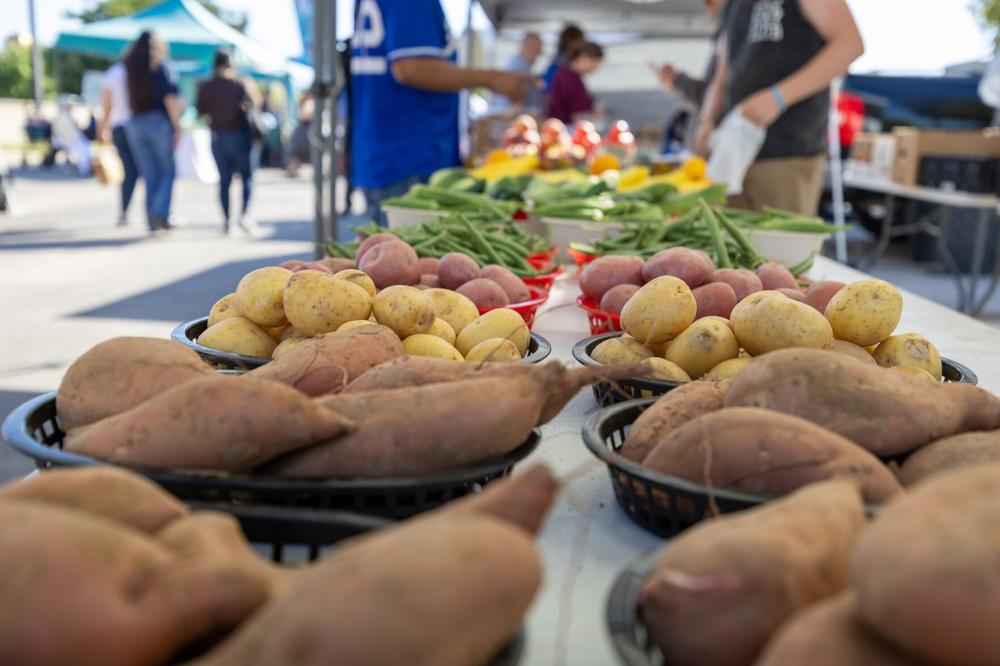
- How pigs are prepped for show and auction at the State Fair of TexasDALLAS – Tired kids and parents slept in chairs as pigs in animal pens squeaked and squealed Oct. 1. Between then and the day before, families helped kids showing animals load and unload their animals in preparation for the Market Barrows show, looking for a ribbon, and then to sell their pigs at the Big Tex Youth Livestock Auction. Across all animals, more than 2,600 entries competed for 604 spots in the youth auction this year. Students received a previously determined maximum paycheck for their animal once it sold, with any excess amount going toward the Big Tex Youth Livestock Auction and Scholarship Program, according to a State Fair of Texas press release. Wolfforth, Texas, resident Buddy Cooper, 70, went to support his three granddaughters, who were all showing pigs. Cooper said that raising pigs requires a lot of hard work. “They feed them every day, walk them every day, weigh them pretty consistently, keep them washed,” Cooper said. He said they make sure to wash the pigs well because they aren’t like barnyard pigs. “They’re at a show, so looks count,” Cooper said. “You got to look good.” Even before the pigs make it to the show, there are things competitors need to be aware of. Cooper said there are minimum and maximum weights that the animals need to be between. However, it isn’t as easy as just weighing the pig before the competitors leave for the competition; plenty of factors come into play. He said that just from riding in a trailer, a pig could lose up to three or five pounds. “They can lose that much depending on the weather conditions, what they’re being fed and all,” Cooper said. “They can possibly lose that much just between a morning feeding and a evening feeding.” Once the pigs are weighed, they are put into animal pens. Corsicana, Texas, resident Hallie Bates, 17, showed a Yorkshire pig at the State Fair of Texas. Bates said the breed name is mainly about how a pig looks, such as ear shape or patterns and pigmentation. She has competed in animal showing since she was in eighth grade and continues through high school. Bates said she started showing pigs because they were what her friends were showing. “I thought, ‘Huh, that’s pretty interesting,’’’ she said. “My dad got into it because he did it when he was younger, too. So he asked if we wanted to do it, so we said sure.” Since the state fair is in the summer, Bates had to raise her pig differently than she would have if she were raising it in the winter. Bates said that in her family’s barn, they use goat pellets instead of wood shavings on the floor as it keeps the pigs cooler. She said they also have to use lots of fly spray since there are more flies in the summer. They also had to keep fans on the pigs so they didn’t overheat. When coming out to the state fair, Bates and her family woke up at 2:45 a.m. to load the pigs. When they got to the fair, they waited until they were first in line and dropped the pig off in its pen. Spring, Texas, resident Kaylie Peters, 16, said she and her family brought her pig on a trailer with air conditioning. “Every time he sees it, he runs on there,” Peters said. “He’s excited to be in the air conditioning.” She said her pig has a big personality; he loves attention. “I can just sit there, he’ll lay on the ground next to me just wanting to be pet,” Peters said. She raised the pig since he was three months old, taking him out of his pen every day and doing a skincare routine on him since his skin dries out fast. Peters said that when it is time to show the pig on stage, it can be a little nerve-racking because she wants to do good but that it is overall a fun experience she enjoys. “I want a future in ag,” she said. “I want to become a vet, so experiencing these animals and raising them, it’s definitely helped.” @wall035203 news-editor.shorthorn@uta.edu
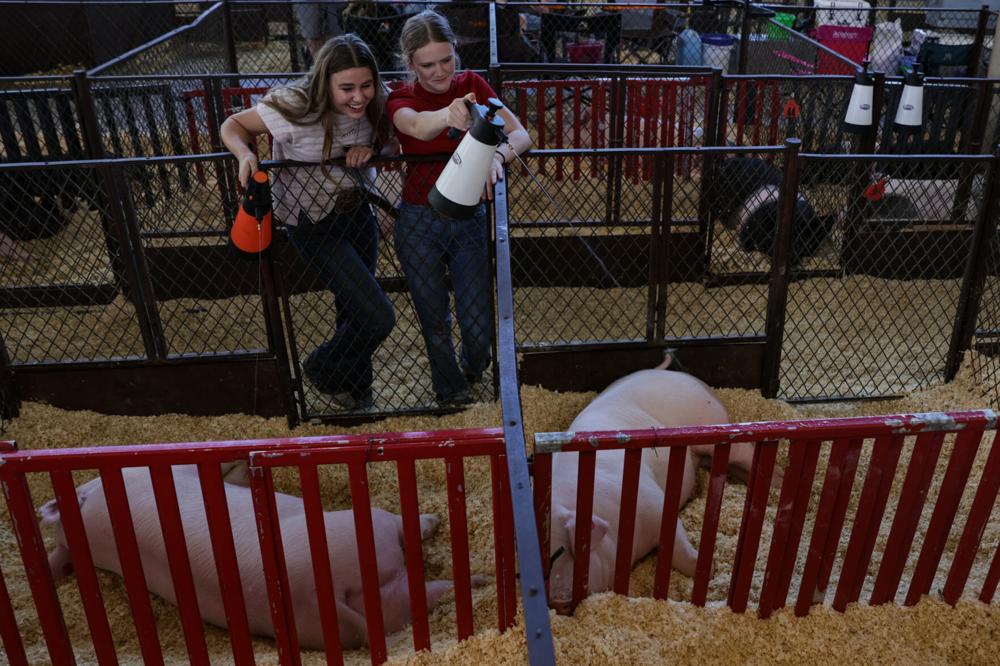
- Students hold pro-Palestine protest on south bridge over Cooper StreetMarking two years of war across the Gaza Strip, Students for Justice in Palestine rallied on the south bridge over Cooper Street on Tuesday, demanding that UTA divest from companies supporting Israel. Palestinian flags and banners for the movement were hung along the bridge by dozens of protesters donning keffiyeh scarves. Several cars driving below honked while others flew their own red, green, black and white flags in support of the movement. For over two hours in the heat, protesters chanted, urging the university to cut ties with weapons manufacturers and calling for Palestine to be freed. “The movement has grown, and this will lead to the liberation of Palestine in the future,” said Sana, Students for Justice in Palestine executive board member. On Oct. 7, 2023, Hamas fighters stormed Israeli towns in a surprise attack, killing around 1,200 people, mainly civilians, and taking 251 hostages back to Gaza, according to the Associated Press. The assault prompted Israel to launch an offensive to destroy Hamas and free the hostages, resulting in two years of devastating bloodshed in the region. Israel’s attacks have killed more than 67,000 Palestinians and injured nearly 170,000, according to the Gaza Ministry of Health. Israeli Prime Minister Benjamin Netanyahu has been steadfast in calling for Israeli hostages to be released before the assault will end. Sana said Oct. 7 is a day of remembrance. “We're using this day to remind everyone of the genocide that started, but we're also using this day to remind everyone that this didn't start on this day; the occupation in Palestine has been for 77 years,” she said. As a Palestinian, Sana said she has been part of the movement with her family since she was a child but has never seen the violence reach the degree it is at now. “In the situations before, where Gaza would get bombarded like this, they [Israel] would be killing civilians and bombing the homes, but it has never been flattened to this level,” Sana said. Jenin, Students for Justice in Palestine outreach lead, said she comes from Jimzu, a village that was colonized by Israel in 1948. She said it’s important not to forget the people left in Gaza. “We shouldn't be normalizing seeing children losing limbs, bombs being dropped on schools, especially as a university student,” Jenin said. One of the protesters' main issues is UTA’s work experience partnership with Lockheed Martin, a defense and weapons manufacturing company under fire by many organizations and activists for supplying machinery used in Israeli bombardments. “Unfortunately, University of Arlington has not divested,” Jenin said. “The board of trustees are the ones that make the decisions for the investments and the endowment funds, and they've chosen to fund genocide instead." @PMalkomes news-editor.shorthorn@uta.edu
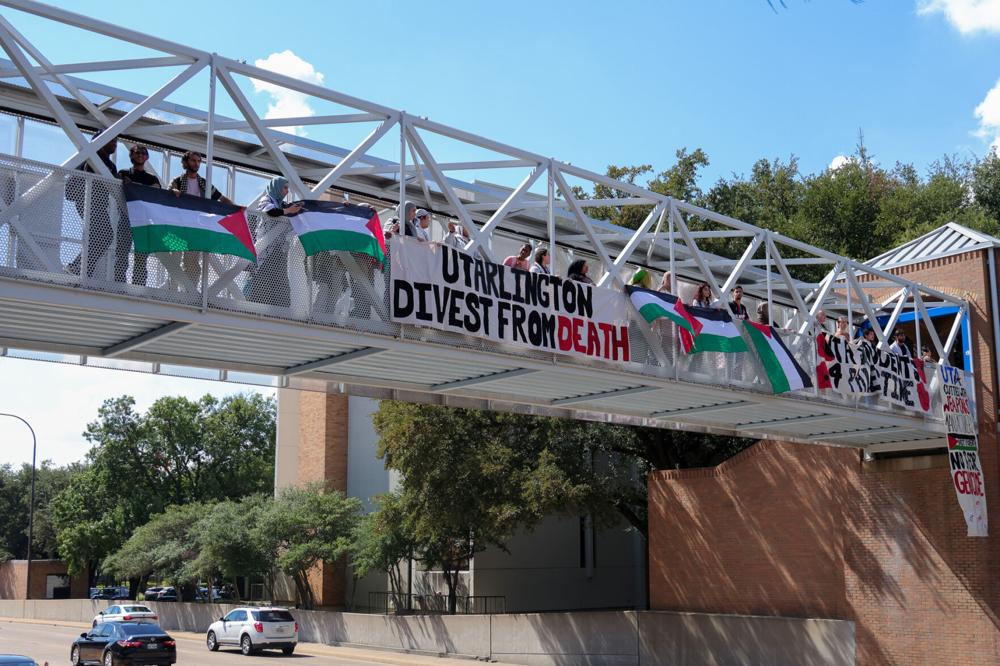
- Arlington’s ACTIV Center opens natatorium for residents aged 50 and overArlington resident Clo Brown said she loves spending time inside the vortex — the fast-moving section of the ACTIV Center’s wellness pool where water spins in one direction. “I feel like a 5-year-old on a merry-go-round,” Brown, 83, said. “I love that.” Brown is one of hundreds of Arlington residents 50 and over enjoying the new natatorium at the ACTIV Center on West Green Oaks Boulevard, which officially opened Sept. 15. The area, located at the center’s south entrance, features a four-lane indoor lap pool and an indoor hydrotherapy pool designed for wellness and recreation. While the ACTIV Center welcomed residents in March, construction delays pushed the natatorium’s opening to September. Chris Hayden, ACTIV’s aquatics program coordinator, said members have complimented the pools. “They absolutely love the water temperature, the aspect that they can go in and do river walking whenever they want and get kind of their own independent therapy,” Hayden said. The 44,000-gallon wellness pool stays around 88 degrees and reaches four feet deep at the front, Hayden said, allowing residents to exercise independently using tools for the arms, legs or back or to stretch. Dumbbells in hands and a foam noodle between her knees, Brown pedaled clockwise through the three-and-a-half-foot-deep river walk section of the pool. “That really helps strengthen my arms,” she said. Brown said she likes exercising in the pool as she can bump into people and make new friends. As she pedaled around the river walk, Brown stopped to chat with Arlington residents Virginia and Randal Hudson, who walked counterclockwise. “The resistance gives an added value, and it's easier on our joints,” Virginia Hudson said. The 68,000-gallon lap pool is sloped for aerobics and stays at 84 degrees, Hayden said. Each lane gets deeper, ranging from 3 1/2 feet to almost five. The staff tests the water temperature regularly and checks chemical levels every two hours, he said. A QR code at the pools allows members to view live updates on chemical levels and temperatures, and at least four lifeguards are on staff at any point. ACTIV is one of the city’s largest recreation centers. Voters approved partial funding for the $64 million center in a special bond election in May 2017. In the outer lap pool lane, Arlington resident Victor Purnell paused his swim to chat with lifeguards. A former lifeguard of nearly 30 years, Purnell said he typically lifts weights before swimming and, if he has energy left, finishes with a basketball session — all at the ACTIV Center. “I love to see my taxpayer money at work,” Purnell said, adding that he swims at ACTIV at least three days a week. Starting Oct. 1, ACTIV began offering six classes, including water aerobics, aqua Zumba and private lessons. Classes are free for gold-tier members. Those with blue and green memberships can use the pool to swim laps or for independent exercise at no cost and can attend classes for an additional fee, Hayden said. Brown said she would have liked to join a class, but the one she wanted was already full. And the early morning options didn’t sound appealing to her. “When you get my age, you don't do early,” she said, chuckling. Instead, Brown stuck to her own routine, pedaling around the river walk for more than an hour a day, four days a week. As her chats wrapped up, Brown refocused and began pedaling again. She still had 15 minutes left in her workout. @DangHLe news-editor.shorthorn@uta.edu
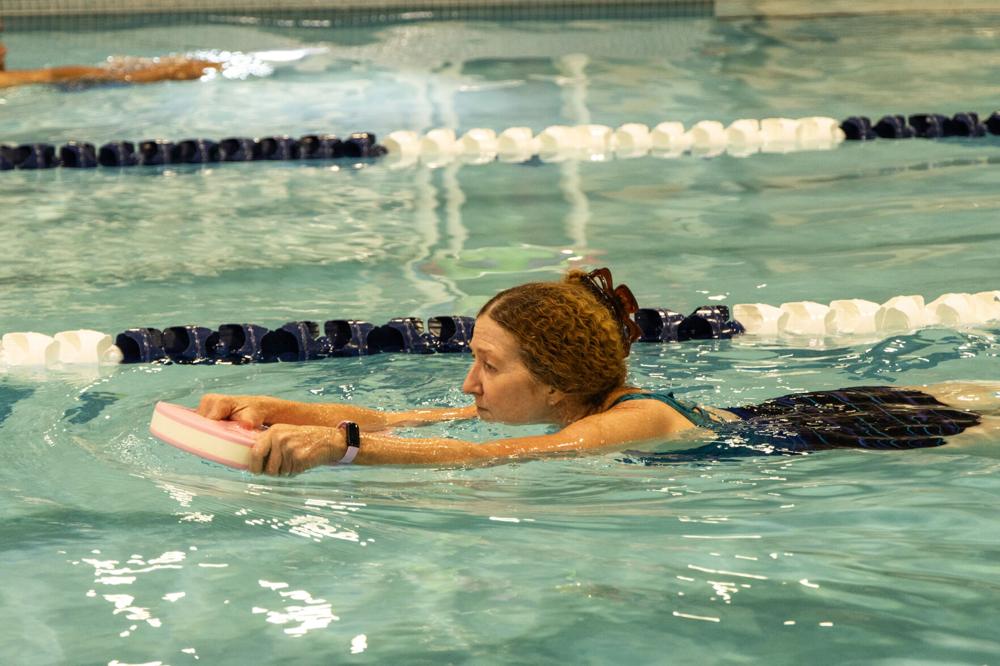
- Zeta Tau Alpha makes a return to UTA, boosts Greek life interestZeta Tau Alpha has been at UTA since 1969, but after declining membership, the sorority took a one-year pause. “When memberships start to decline, it becomes harder to recruit more members,” Karla Wheeler, Zeta Tau Alpha extension director, said, noting this prompted the decision to halt operations. Amanda Perez, Fraternity and Sorority Life director, said the 2030 strategic plan for Greek life at UTA is growing and cultivating the Greek community and that with Zeta Tau Alpha’s return, more chapters will be active, which in turn will contribute to campus life and community. “Having an amazing organization like Zeta Tau Alpha rejoining us with a house on Greek Row is just going to continue to bring that sense of belonging and sisterhood and home away from home that I know the university is looking for,” she said. During various tabling events and organization fairs organized through the Zeta Tau Alpha national organization, Wheeler said that many women have signed up and shown interest in joining. “It makes me hopeful for the future success of the chapter,” she said. The first event since the sorority's return was hosted Oct. 2. During the event, attendees created their own bouquets, met the Zeta Tau Alpha leadership consultants and learned more about the sorority. Beyond the event, Zeta Tau Alpha’s mission emphasizes service and long-term sisterhood. Perez said the sorority’s service project focuses on breast cancer education and awareness. She said Zeta Tau Alpha also has a chapter at UT Austin, providing Coordinated Admission Program students an opportunity to continue the sisterhood throughout their entire collegiate journey. She said something that makes Zetas unique is a line in their creed which emphasizes “being” rather than “seeming.” “They have amazing women in their organization that I’ve been able to work with at different campuses,” she said. “Their creed, where they push to be rather than to seem, has been an amazing way for them to shape that culture of that organization.” Zeta Tau Alpha will have recruitment week from Oct. 14-17. Their next event will take place Wednesday, where attendees will have the opportunity to create custom glass tumblers, make a dirty soda, get to know other women on campus and learn if Zeta Tau Alpha will be a good fit. @ tay._.sansom news-editor.shorthorn@uta.edu
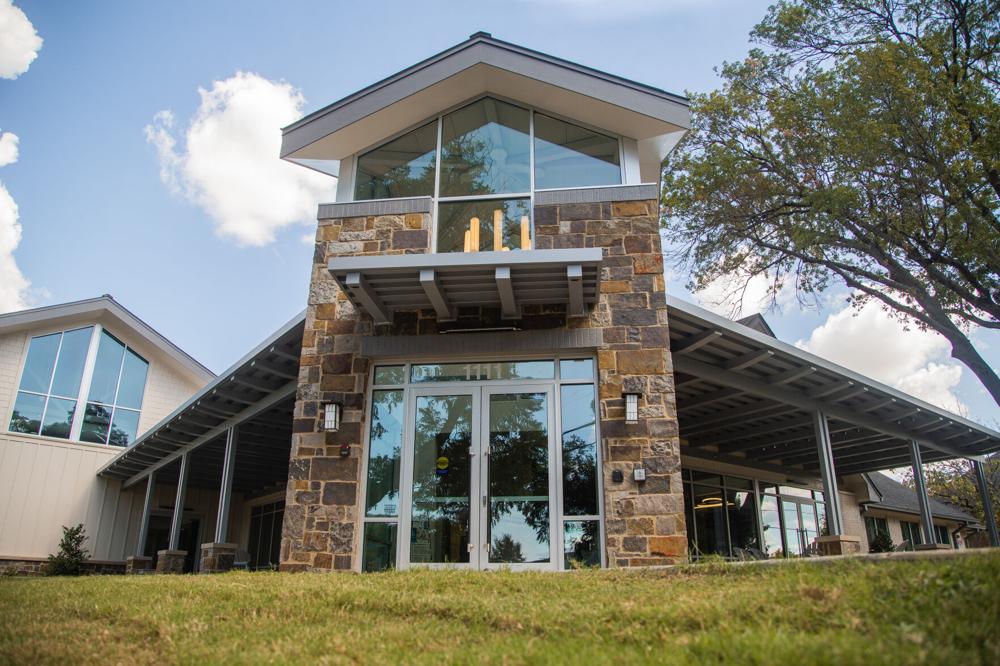
- Foreword Literary Festival at UTA to promote Vietnamese American literatureOn Wednesday and Thursday, the Foreword Literary Festival will host two events at UTA celebrating Vietnamese American literature and the arts. Co-sponsored by the Department of English and Four Palaces Publishing, authors Truong Tran and Andrew Lam will be on campus both days. UTA alumnus Frederick Tran, co-founder and executive director of Four Palaces Publishing, said the idea for the festival originated between him and creative writing professor Laura Kopchick. From 5 to 6:30 p.m. Wednesday in Room 101 of College Hall, Truong Tran and Lam will each give a 20- to 30-minute reading from their respective works, followed by a Q&A session moderated by Kopchick. From 5 to 6 p.m. Thursday in Room 212 of Carlisle Hall, both authors will participate in an informal hangout. “I don't believe that you have to be Vietnamese to appreciate their writing, and I encourage that anyone who's interested or just wants to hear a different perspective than one they might be used to or to come out and hear them read, hear them share their stories,” Frederick Tran said. @wall035203 news-editor.shorthorn@uta.edu

- Former US ambassador to Russia Michael McFaul to lead upcoming Maverick Speakers SeriesMichael McFaul, former U.S. ambassador to Russia, will take the stage at this semester’s Maverick Speakers Series at 7:30 p.m. Wednesday in Texas Hall. Mark LaVelle, assistant vice president for university events, said McFaul was recommended by the faculty at UTA’s Charles T. McDowell Center for Global Studies. LaVelle also said that with the current state of global politics, this was an opportune time to have McFaul as a guest speaker. The lecture will be moderated by Brian Whitmore, assistant professor of practice at UTA and a nonresident senior fellow at the Atlantic Council's Eurasia Center. “The purpose of the series is to start a conversation and continue a conversation with members of the community about current affairs and issues that are happening,” LaVelle said. “It sort of expands the educational mission of the university outside of the classroom.” Admission is free for students, faculty, staff and retirees with a UTA email address. General admission is $5. After the event, there will be an autograph and book signing. @taylormakynzee news-editor.shorthorn@uta.edu

- UTA alumnus to present on eugenics, racism, immigration history and former UTA deanMichael Phillips, UTA alumnus and author, will deliver a presentation called “‘Worthless Human Silt’: Eugenics, racism and immigration in UTA History” from 12:30 to 2 p.m. Thursday at the sixth floor parlor of the Central Library. The talk will center around former dean of the university E. E. Davis. Phillips said in an email that Davis supported eugenics, wrote a white supremacist novel and advocated for closing immigration from Mexico. Phillips said he began researching Davis after reading a book by his mentor that mentioned Davis, but it only scratched the surface of the history. “I thought, ‘Well, this needs to be a fuller story because he had a very long career, and frankly, a lot of it was really terrible,’” he said. The talk will also give information on the history of eugenics in Texas. Phillips said he thinks there is a lot to learn from the era of forced sterilization in the United States. “They leaped way ahead of what knowledge they actually had and drew conclusions, sweeping conclusions, and that’s dangerous.” @wall035203 news-editor.shorthorn@uta.edu
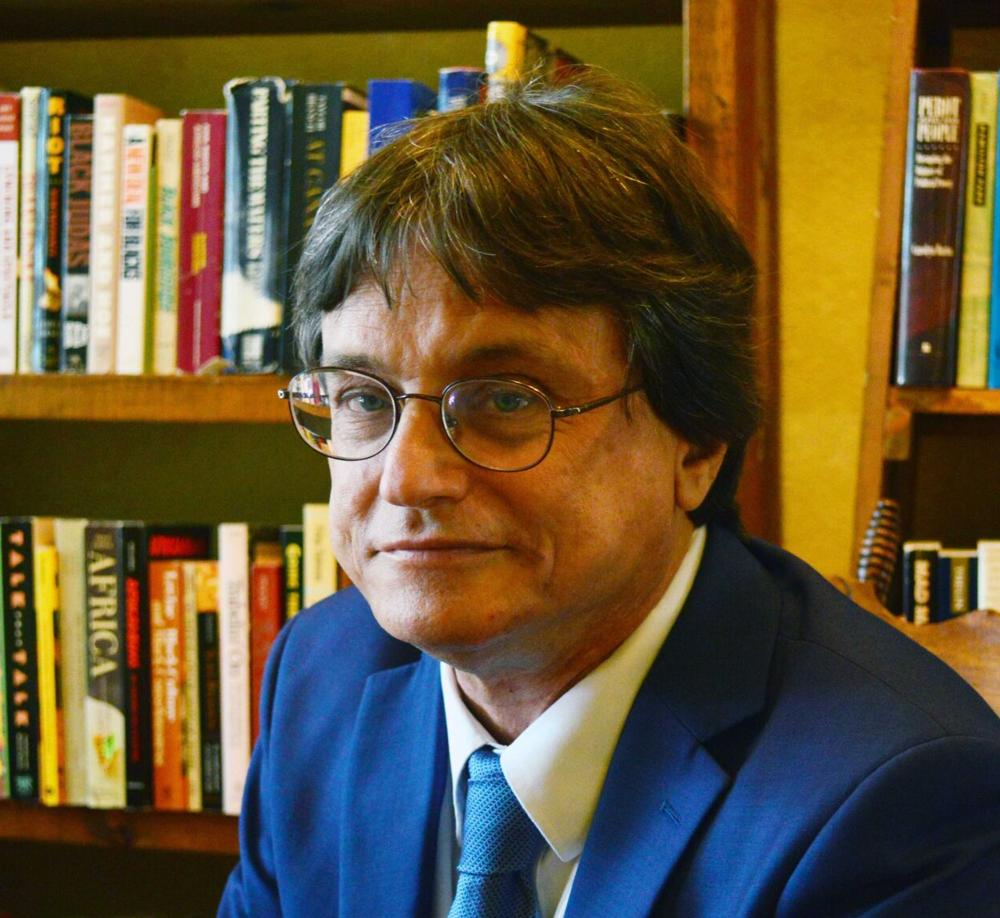
- Dry, unusually warm weather expected in Dallas-Fort Worth this weekDallas-Fort Worth residents can expect another dry, warm week, with highs approaching the 90s and lows around 70. Tom Bradshaw, National Weather Service meteorologist, said a large area of high pressure will result in little cloud coverage and mild nights. A weak front is expected in the middle of the week, dropping temperatures to the high to mid-80s; however, as the week progresses, temperatures will return to the 90s. Bradshaw said temperatures are around 6 to 10 degrees above what they typically are for the time of year. There has also been less precipitation recently than normal, he said. “We’re running below normal for the month of October,” he said. “We’re kind of running below normal for the last couple of months here at the Metroplex.” @tay._.sansom news-editor.shorthorn@uta.edu

- Possession of marijuana, sexual assault and disorderly conduct reported in this week’s crime logThis is a crime wrap-up of Sept. 24-28. Possession of marijuana On Sept. 24, officers checked the welfare of a student, UTA Police Capt. Mike McCord said in an email. The student was found to be in possession of marijuana, and was arrested and transported to the Arlington Police Department jail. Possession of marijuana of two ounces or less is a class B misdemeanor punishable by a fine not to exceed $2,000, up to 180 days in jail or both. Theft of property On Sept. 25, a student reported receiving fraudulent checks, McCord said. Theft of property valued between $100 and $750 is a class B misdemeanor punishable by a fine not to exceed $2,000, confinement in jail for up to 180 days or both. This case is still active. Disorderly conduct - noxious and unreasonable odor On Sept. 25, officers investigated someone spraying pepper spray, McCord said. Disorderly conduct is a class C misdemeanor punishable by a fine not to exceed $500. Sexual assault On Sept. 27, a UTA-affiliated person reported a sexual assault, McCord said. Sexual assault is a second-degree felony punishable by imprisonment in the Texas Department of Criminal Justice between two and 20 years. Perpetrators may also receive a fine not to exceed $10,000. This case is still active. Reckless damage or destruction of property On Sept. 28, an unaffiliated person reported damage to her vehicle while it was parked, McCord said. Reckless damage or destruction of property is a class C misdemeanor punishable by a fine not to exceed $500. This case is still active. @wall035203 news-editor.shorthorn@uta.edu
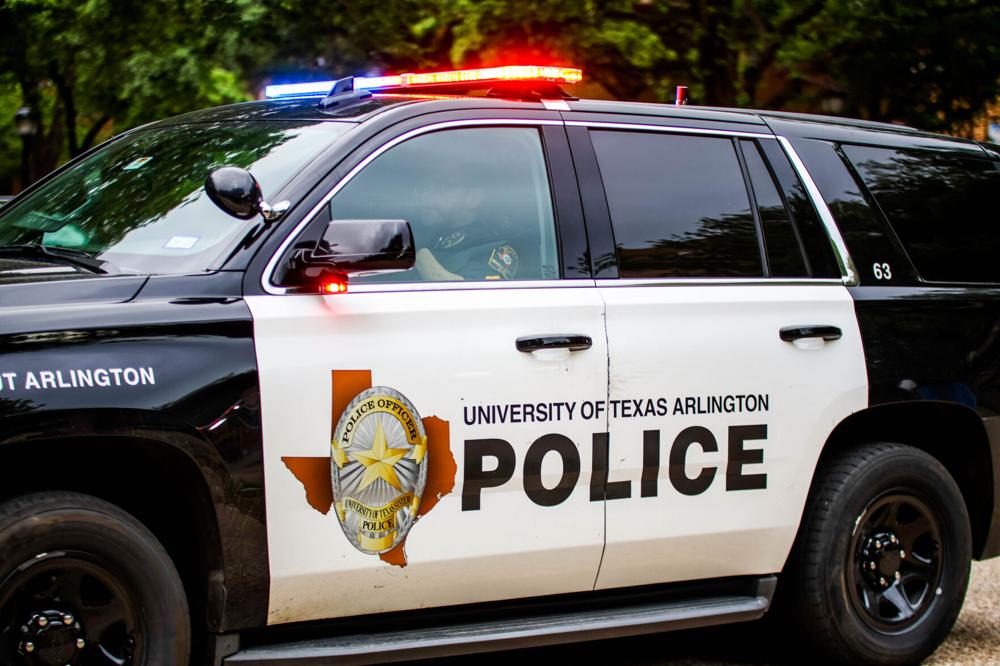
- UTA professor researches possible communication patterns in dog barks with AIEver since he was a kid, Kenny Zhu loved animals. With a small yard, he raised at least 10 different kinds growing up, but that changed when Zhu and his family moved. “I loved animals since I was young, but as I grow up, you know, we moved to high-rise buildings, and I just didn’t have the luxury to do this anymore,” said Kenny Zhu, computer science and engineering professor. However, research has brought Zhu back to animals as an adult. Through artificial intelligence and machine learning algorithms, he and a group of graduate students are studying the sounds that dogs make to determine whether canines have recognizable communication patterns. In 2024, Zhu received an estimated three-year grant totaling $483,804 from the U.S. National Science Foundation to research dog vocalizations. The team started with studying Shiba Inus dogs as a control variable because of their prevalence in both the United States and Japan, according to previous Shorthorn reporting. Graduate student Theron Wang said the reason that dogs were picked for the research project was because of their proximity to people. “I think it’s going to be an exciting thing if we can figure out what our puppies, our dogs, are talking about, trying to understand what they want to express,” Wang said. The team soon began extracting audio from YouTube and Reddit videos and putting it into programs that would isolate the sounds that dogs make. Once the audio is isolated, Al can be used to examine the sequence of the data and mark out possible words. With context clues, such as the original video the audio was pulled from, the team can then decide if a specific sound might correlate to a possible word, using multiple videos and data sets of other dogs. The tools and processes Zhu and his team are using are similar to the AI and machine learning processes used in music projects. An example would be from 2023’s “Now and Then” by The Beatles, in which machine learning software isolated John Lennon’s vocals from an old demo to be used with new instrumentation. “That’s actually called a music separation, which is a kind of sound source separation,” Zhu said. “We’re doing that too in order to separate not only dog voice from other sound sources, but perhaps also, we’re trying to solve a cocktail party problem where multiple dogs are talking at the same time.” Since the research has started, the team has collected the largest canine multimedia vocalization data set in the world, he said. Zhu said they annotated the data set into categories such as the emotional states, sex, breed and age of dogs. All of this culminated in an AI challenge called “Barkopedia” that the team made for the International Joint Conferences on Artificial Intelligence. The team has also released multiple research papers since 2024, one of which won the Association for Computational Linguistics’ outstanding paper award. “This means a huge deal to us, because we are actually trying to start this new field, which is called computational animal linguistics,” Zhu said. Wang said that when the team began its research, it received criticism on the topic of research, but as time has gone on, the team continues to get more support for their findings. “We were frustrated a little bit at the beginning,” he said. “But luckily after that the academia, the ACL, the conference, accepted our concept.” The team isn’t stopping at dogs. “We’re actually designing a collar to be put on cats and then to record the vocalization of cats,” Zhu said. He added that the team is also in contact with a dog collar company that incorporates recorders into its collars for a possible collaboration in the research. Zhu is working on a grant that will partner with Texas A&M University and use vocalizations of cattle to predict their health. Wang said the research that Zhu and the other graduate students are doing isn’t basic science where what is being done can be touched or felt, but that it is important for human beings and general animals. “In future, we can communicate with wisdom,” he said. “We can know what they want, and we can live together better and better, and thinking more about the animals.” @wall035203 news-editor.shorthorn@uta.edu
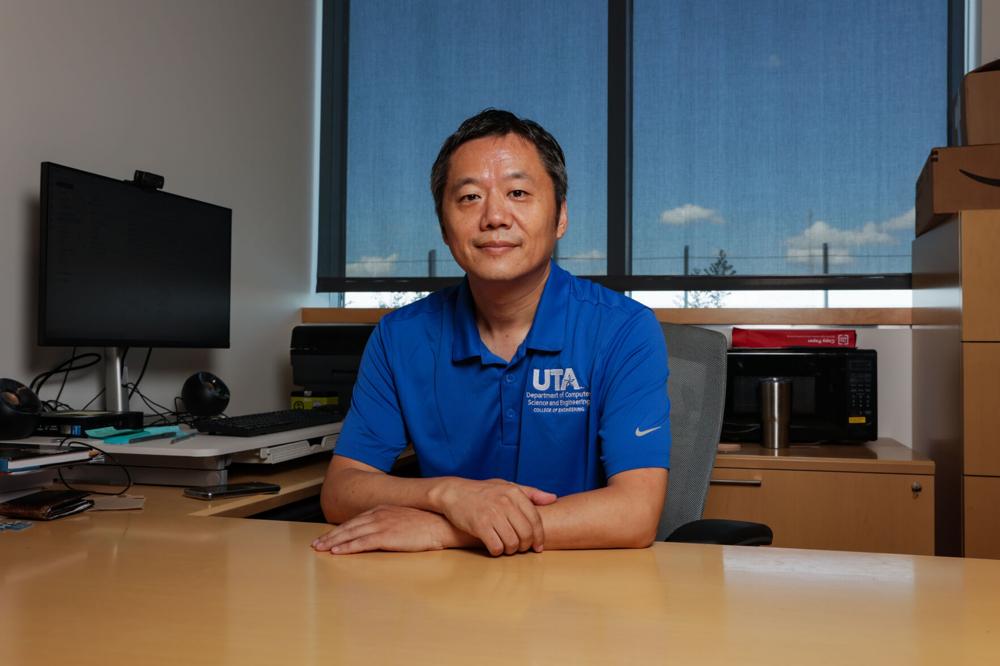
- Engineering professors pave way for oyster reef sustainabilityTwo UTA professors are pioneering change with their project to revive oyster reefs using 3D printed reconstructions of ancient Roman concrete in the Gulf of Mexico. Adnan Rajib, civil engineering assistant professor and hydrology and hydroinformatics innovation lab director, has secured a $500,000 grant from the U.S. National Science Foundation to establish the first regional resilience innovation incubator for coastal Texas. The project will use a living 3D printed engineered reef system designed to simultaneously protect from flooding and restore oyster habitats, according to a LinkedIn post by the civil engineering department. Rajib said the plan is to have the prototype of the 3D printed reefs ready by the summer of 2026 and implemented at the end of 2026, using the following year to do experiments and monitor the reefs. Civil engineering professor Warda Ashraf said she began working with coastal resilient materials in 2020 while supported by the Department of Defense, coming up with a recipe that mimics ancient Roman concrete. In April 2023, the team was able to successfully implement a field test in Baffin Bay. “There have been so many different, proud moments,” Ashraf said. “When we came up with the ancient Roman concrete recipe, that was kind of an eureka moment for me.” After the year-long test, Rajib took samples from Baffin Bay and saw that the concrete was full of oysters and marine habitat, and the samples were retaining their shapes and working as designed. It was important to work with local communities to find the best solution that not only meets the needs of the oysters’ environment, but also incorporates stakeholder and community guidance into the design process, Ashraf said. The team is set to put the engineered reef system in several bay areas in South Texas. Engineered reef systems are not new, she said. But previous attempts had negative impacts, using tires that damage the coral reefs during storms or traditional concrete that has a high carbon emission and erodes quickly. The Roman concrete is unique because it was historically made with sea water and has lasted over two thousand years, she said. Oyster larvae need a solid substrate to settle down in, and they look for cues like color, pH and roughness of the surface. Roman concrete has more surface area for the larvae to settle and grow on. Additionally, the Roman concrete is a source of food for oysters, producing calcium and certain constituents that are attractive to marine life. With changes to the environment, it is getting harder for oysters to naturally survive. “Based on data and remote sensing satellite, we found that ambient salinity is no longer there. It changed,” Rajib said. “The habitat, suitable habitat, it’s being depleted.” The ocean’s salinity is the ratio of salt to water. Low salinity, along with overharvesting, has led to a danger of oysters going extinct. “More than 50% of reefs are gone, and there has been a lot of efforts and different solutions, but none seem to be working in a sustainable way,” Rajib said. “So that is the gap we are trying to fill.” Oysters capture carbon dioxide and help combat the acidification of the ocean, which is the reduction of pH caused by an increase of carbon dioxide in the ocean. Ashraf said that oysters take carbon dioxide and convert it to minerals. By providing oysters more homes or promoting their growth, they will remove more carbon dioxide from the ocean. The artificial reefs will also act as a natural flood barrier along the coast, Rajib said. They will break the waves, providing protection from possible disaster. “Coastlines are one of the most vulnerable parts of the landscapes,” he said. “We have to rely on the coastal resources. But on one hand, we are overharvesting them in a not so sustainable way.” 3D printing makes it possible to have nature-inspired shapes that casting cannot achieve. It gives flexibility, Ashraf said. The technology allows the team to innovate in ways that others in the past haven’t been able to do. “We feel very confident that at this point, if we put it in the field, there should not be any negative impact. Rather, it will actually work with the nature to have this composite structure that can provide the coastal resilience. But at the same time, it will be beneficial to the community,” she said. @atclements03 news-editor.shorthorn@uta.edu

Load more...
Loading...


